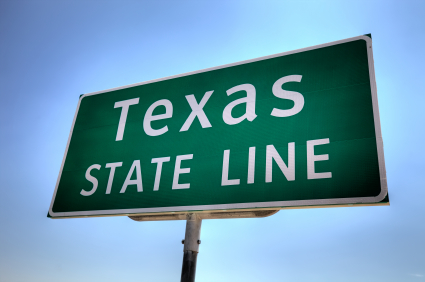When to Switch Car Insurance Between States
How auto insurance is different from state to state, when it’s OK to drive between states, and when it’s time to switch your state coverage.
In the United States, auto insurance is necessarily a state-level concern. Each state has its own laws. But this begs the question:
If you drive to another state are you still covered?
Fortunately the good news for road trippers everywhere is that answer is a resounding “yes” … probably.
Know Your State Limits
State minimum liability coverages vary rather dramatically. They range from a paltry 10/20/5 in Mississippi (that is, in a single accident $10,000 for bodily injury to one person, $20,000 for bodily injury to any group of people, and $5,000 for property damage) to a somewhat more substantial 50/100/25 in Maine. Several states other than Mississippi, including California, Massachusetts and New Jersey, still only require $5,000 in property damage coverage. Seriously, when was the last time a new car cost $5,000 anywhere?
To address this most policies have a built-in “out of state coverage” which automatically covers you at state minimums in another state should those minimums be above your policy. Before driving out of state, and especially if you live in a state with low liability requirements, check with your insurance agent to verify this coverage before crossing the border. Chances are you’re fine, but it doesn’t hurt to check.
Note if you carry liability and corresponding uninsured and underinsured (UM/UIM) limits of at least 50/100/50 – which many insurance professionals recommend in the first place regardless of what state you live in – you satisfy even the toughest state legal requirements for auto insurance, thereby rendering the issue irrelevant. The bottom line is given adequate coverage, if you’re in another state and just visiting you’re good to go.
When to Switch Insurance Between States
The general rule is you should carry your auto insurance in the same state your vehicle is registered in. Indeed, many states including Nevada and Florida require you to purchase in-state auto insurance before you register your vehicle. Most states require you switch your registration within 90 days of moving.
If you’re staying with the same company, switching insurance should be a rather seamless process. However only the largest insurance companies are active nationwide, and even some of them aren’t in all 50 states. For example Farmers Insurance is a major, established auto insurer in the western states, but has a much smaller presence on the east coast.
If you are switching companies either by choice or by necessity after moving to a new state, be sure to notify your old insurance agent of your cancellation date as soon as possible so you can be properly credited for any unused premium.
A Temporary State? Better Stay Where You Are
When it comes to picking up and moving to a new state, switching auto insurance should be a no-brainer. However, there can be a considerable gray area when it comes to a temporary move such as for college, especially if you don’t intend the move to be permanent.
The quandary is, while actually in school is a college student considered a resident of his home state, or the state where he or she is in college? In many cases as far as the insurance company is concerned the answer is the latter, particularly if that company isn’t licensed in the state where the school is.
While switching insurance can result in the student losing discounts associated with being on the family policy, sometimes it’s the only way to stay covered. Check with your agent to see how such a situation applies to you before you find yourself in a particularly nasty claim dispute.





